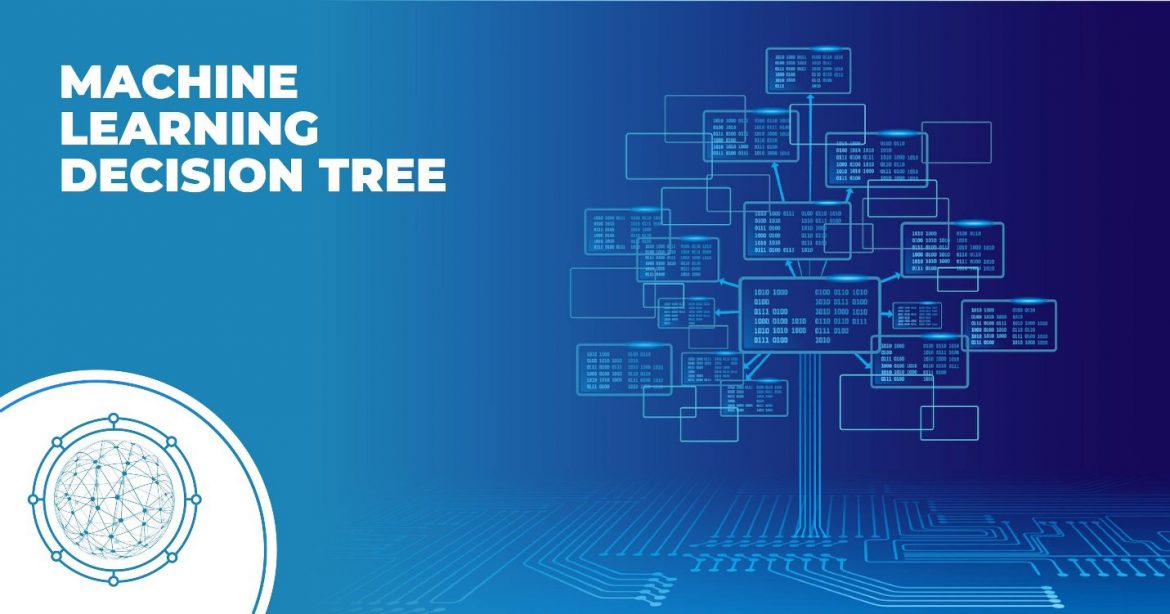Table of Contents
Machine learning decision tree – Discover Trendy Information from 2021
In machine learning, classification is a two-step method, a learning phase, and a prediction phase. The model is built based on provided training data in the learning phase. The model is used in the prediction process to predict the response to the data provided. One of the simplest and most common classification algorithms to understand and analyses are the Machine learning decision tree.
What are decision trees in machine learning?
A machine learning decision tree is a tree-like graph with nodes representing the position where we select an object and pose a question; the answers to the question are represented by edges, and the leaves represent the mark of the individual output or class. They are used for basic linear decision surfaces in non-linear decision-making.
Decision trees define the examples by sorting them from the root tree to a certain leaf node, with the example classification given by the leaf node. For some attributes, each node in the tree serves as a test case, and each edge descending from that node correlates to one of the possible responses to the test case. For any subtree rooted in the new nodes, this method is recursive and is replicated.
Generally, a statistical modeling technique that has applications covering a variety of different fields is Decision Tree Analysis. Machine learning decision trees are usually built by an algorithmic approach that defines ways to segment a data set based on various conditions. It is one of the most commonly used methods for supervised learning and is functional. A non-parametric supervised learning approach used for both classification and regression problems is Decision Trees. The aim is to construct a model that forecasts the value of a target variable by studying basic rules of judgment derived from the data characteristics.
How do you create a decision tree in machine learning?
First, we have to learn about pure, impure, and Gini impurity. If the selected sample of the dataset belongs to the same class is called pure and if it is a mixture of different classes, then it is called impure.
What is Gini impurity?
Gini Impurity is a measure of the probability that a new instance of a random variable is wrongly labeled if the new instance is arbitrarily categorized according to the distribution of class labels in the data set.
If our dataset is pure, then the probability of inaccurate classification is 0. If our sample is a combination of different groups, so there would be a high risk of improper grouping.
Steps in making machine learning decision tree
- Get a set of rows that are considered to render the decision tree (dataset) (recursively at each node).
- Determine the instability of the dataset or the impurity of Gini or how complex the data is, etc.
- Generate a list of all the questions at that node that need to be answered.
- Depending on any question asked, division rows into true rows and false rows.
- Calculate the benefit of knowledge based on the impurity of Gini and the division of previous phase results.
- Update the maximum gain of data depending on each question asked.
- Updating the right issue based on obtaining knowledge (higher information gain).
- On the best query, break a node. Repeat from stage 1 until we have a pure node again (leaf nodes).
Which algorithm is used in decision tree?
The Machine learning decision tree algorithm belongs to a class of algorithms for supervised learning. In comparison to other supervised learning algorithms, the decision tree algorithm can also be used to solve problems with regression and classification.
The purpose of using a machine learning decision tree is to construct a training model that can be used by learning basic decision rules from previous data to predict the class or value of the target variable (training data).
These are the algorithms used in the decision tree:
ID3
The algorithm generates a multi-way tree that can have two or more edges for each node to find the categorical function that will optimize the gain of knowledge using the entropy of the impurity criterion. Not only does it not accommodate numerical attributes, but it is also only suitable for problems of classification.
CART
CART stands for Trees of Classification and Regression. The algorithm produces a binary tree, with each node having exactly two outgoing edges, using a suitable impurity criterion to determine the best numerical or categorical function to divide.
Where do we use the decision tree?
An important point of a decision tree is that it forces all possible consequences of a decision to be weighed and maps each direction to a conclusion. It offers a detailed overview of the implications for each branch and defines decision nodes that require further analysis.
Machine learning decision tree is an effective and common method. Data researchers typically use them to carry out statistical analysis (e.g., to develop operations strategies in businesses). They are also a common instrument for machine learning and artificial intelligence, where they are used as supervised learning training algorithms (i.e., data categorization based on various checks, such as ‘yes’ or ‘no’ classifiers.)
Decision trees are commonly used to solve all kinds of problems in a wide variety of industries. They are seen in industries from electronics and health to financial planning because of their versatility. Examples are:
- A technology corporation assessing prospects for growth based on the review of previous revenue results.
- Depending on what demographic research shows that consumers are willing to buy, a toy business chooses where to focus its small promotional budget.
- Using historical evidence, banks and mortgage lenders estimate how likely it is that a borrower would default on their payments.
- Emergency room triage could priorities patient treatment by using decision trees (based on factors such as age, gender, symptoms, etc.)
- Automated telephone systems that direct you to the answers you need, e.g., ‘Press 1. for choice A. Click 2 ‘, and so on, for option B.
- Decision trees can examine and address a multitude of market concerns. They are useful instruments for company owners, mechanics, engineers, medical professionals, and everyone else who, in unpredictable situations, needs to make decisions.
Why are decision tree classifiers so popular?
In several different fields, decision tree classifiers are used effectively. Their most valuable attribute is the ability to capture from the supplied data descriptive decision-making information.
The development of the decision tree does not require any domain knowledge or parameter configuration and is thus suitable for the exploration of exploratory knowledge. Multidimensional data can be managed by decision trees. The biggest value of the decision tree classifier is its ability to use various subsets of features and decision rules at different classification levels.
The attribute selection steps are used during tree construction to pick the attribute that best partitions the tuples into distinct classes. Many of the branches may represent noise or outliers in the training data as decision trees are formed. Tree pruning aims to identify and eliminate those branches to enhance the accuracy of the classification of unseen data. Three parameters are used to render the algorithm: D, Attribute array, and Attribute selection process.
As a data partition, we refer to D. It is originally the full set-in tuples of instruction and their corresponding class names. A list of attributes defining the tuples is the parameter attribute list. The method of attribute selection defines a heuristic protocol for selecting the attribute that discriminates between the knowledge gain or the Gini index of the tuples given.
The collection of attributes is used to decide the division criteria that tells us which attribute to evaluate at node N by specifying the “best” way of separating or dividing the D tuples into individual groups.
Are you interested to know more about Machine Learning Decision Tree?
If you liked our article about Machine Learning Decision Tree, you may find interesting the following articles:
Machine Learning Regularization
Machine Learning VS Deep Learning
For more information on Machine Learning Algorithms, follow us on our Linkedin page High-Tech trends.





